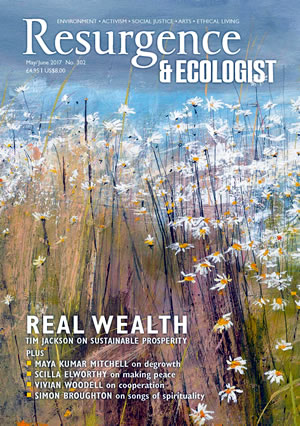A verse from the Koran asserts: “By means of water, we give life to everything,” and Leonardo da Vinci described water as “the driver of all Nature”. Now, Judith Schwartz has written a thoughtful, wide-ranging and illuminating book about the world’s fresh water and how best to protect it.
As with her previous work, such as Cows Save the Planet: And Other Improbable Ways of Restoring Soil to Heal the Earth, the writing is an engaging combination of good, clear science, well explained, intermingled with vivid reportage and reflection based on travels to illustrative landscapes and ecosystems, alongside interviews with often engagingly quixotic and insightful farmers, naturalists, scientists and practitioners.
In Water in Plain Sight, we begin amid the parched landscapes of Dimbangombe in Zimbabwe, and learn how Allan Savory’s holistic grazing techniques have gone a long way to revive springs and streams long thought moribund. Similar techniques have had an equally encouraging impact on water and biodiversity in the Chihuahuan desert grasslands of northern Mexico.
In one gripping chapter, Schwartz describes – citing the Brazilian scientist Antonio Nobre – how deforestation in the Amazon region contributed directly to the drought in São Paolo in 2015, due to the disruption of the water cycle. The writing here has a sustained excellence about it, weaving together with acuity the science, the politics and the human implications of the drought. The message is clear: protecting and restoring the world’s forests is not only the right thing to do, but also one of the surest means of securing the world’s water cycle and food security.
Other chapters cover the landscapes of California and Australia, where farmers are finding ways to work in harmony with the water cycle. The astonishing restoration of Ethiopia’s Tigray region is also cited, as is farmer-managed natural regeneration across Africa (and also in silvopasture systems in Latin America).
Schwartz returns often to the relationship between water and climate change: where we tend to focus on the changing climate’s current and future likely impact on fresh water, she argues, we contemplate less the role of water in driving those same climatic changes. A greater understanding of the symbiosis and relationship between the two is needed.
Schwartz also explores, with appropriate nuance, the ways in which wasteful water use in the years leading up to the Syrian civil war, coupled with climate change, led directly to the drought from 2007 to 2010, which in turn exacerbated the underlying conditions for the tragic conflict that, to the world’s shame, is still under way.
We also learn how water management techniques such as those pioneered in Rajasthan by India’s ‘water Gandhi’, Rajendra Singh, involving the construction of johads, small crescent-shaped stone or earthen dams, can play their part in restoring an agrarian landscape, just as we still have much to learn from the aflaj and other traditional water systems in the Middle East and North Africa.
Approaches to water retention based on biomimicry, replicating the Namib Desert beetle, are also explored; and there is an inspiring account of urban waste-water harvesting in Tucson, Arizona, which has enabled a food forest of pomegranates, oranges and native fruit-bearing plants to be grown.
The challenge, in summary, is to understand the water cycle better, to respect it more, to alleviate the excessive pressures we have placed on it, and then to begin to take steps to work more in harmony with Nature and the water cycle. Schwartz’s book is an admirable guide to many of the ways in which this might happen. Let us hope that its insights gain a wide readership.






